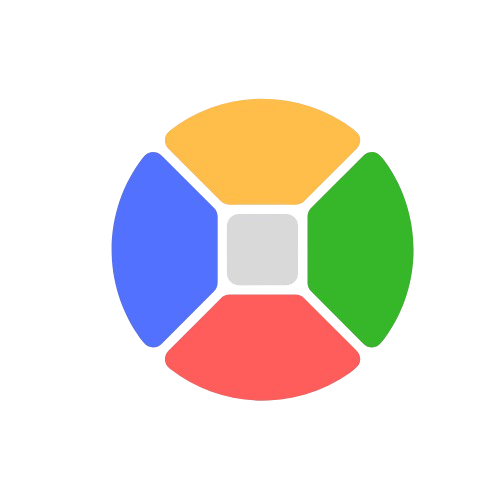Pay-per-click (PPC) advertising has become an essential tool for businesses aiming to drive traffic, leads, and conversions. When implemented effectively, it can deliver quick results, high returns, and the ability to target audiences with precision. However, common mistakes in PPC campaigns can quickly turn a well-intentioned strategy into a costly endeavor. To help ensure your campaigns are successful, here are seven common PPC marketing mistakes you should avoid immediately.
- Choosing the Wrong Keywords
Keywords are at the heart of any PPC campaign. Selecting the wrong ones can waste significant portions of your budget while delivering poor results. Many businesses make the mistake of choosing overly broad or irrelevant keywords, resulting in ads being shown to users who are unlikely to convert.
How to avoid this mistake: Focus on selecting keywords that closely match the intent of your target audience. Conduct thorough keyword research using tools like Google Keyword Planner to identify relevant, high-converting keywords. Ensure you balance general and long-tail keywords—general terms bring traffic, while long-tail keywords attract users further down the conversion funnel.
Another tip is to constantly review and adjust your keyword list. A great keyword today might not be as effective in the future as search behaviors change, so continual optimization is key.
- Ignoring Negative Keywords
Many marketers overlook the importance of negative keywords, but they are just as critical as your target keywords. Negative keywords prevent your ads from appearing in irrelevant searches, which helps you avoid wasting your budget on unqualified traffic.
How to avoid this mistake: During your keyword research, be sure to identify and implement negative keywords to filter out irrelevant search queries. For example, if you sell premium fitness equipment, you may want to exclude searches that include words like “cheap” or “free.” Regularly monitor your campaigns to update and add new negative keywords based on search queries that don’t result in conversions.
- Neglecting Ad Extensions
Ad extensions are an excellent way to enhance the performance of your PPC campaigns. Extensions allow you to provide additional information such as location, phone number, links to specific website pages, and even reviews. Many brands fail to take advantage of these features, leaving valuable opportunities on the table to increase engagement.
How to avoid this mistake: Make use of ad extensions in every campaign to boost visibility and improve the overall user experience. Depending on your business model, different ad extensions may be more effective. For local businesses, location extensions can drive foot traffic, while call extensions can connect users directly with customer service. Utilizing these extensions helps your ads stand out and gives potential customers more reasons to engage.
- Not Maintaining a Quality Score
Google’s Quality Score is a measure of the relevance and quality of your PPC ads and landing pages. It affects how often your ads are shown and their cost-per-click (CPC). A low-quality score can cause your ads to appear less frequently or in lower positions, reducing your chances of capturing valuable traffic.
How to avoid this mistake: To maintain a strong Quality Score, focus on improving the relevance of your ads to the keywords you’re targeting, ensure your landing pages are optimized for user experience, and continually monitor and adjust your campaigns. Key factors influencing Quality Score include:
- Ad relevance: Ensure your ads directly reflect the search intent of the targeted keywords.
- Landing page experience: A fast, mobile-optimized, and relevant landing page leads to better user experiences and conversions.
- Expected click-through rate (CTR): Write compelling ad copy that encourages users to click.
- Not Using Long-Tail Keywords
Long-tail keywords are specific, detailed phrases that tend to have lower search volume but higher intent. Many businesses overlook long-tail keywords in favor of broader, high-traffic terms. However, broad keywords can be more competitive and expensive, whereas long-tail keywords often bring in more qualified leads.
How to avoid this mistake: Incorporate long-tail keywords into your campaign strategy to capture users further along the buying journey. These users are often closer to making a purchasing decision, which increases the chances of conversions. For example, instead of targeting the broad keyword “running shoes,” a long-tail variation could be “best lightweight running shoes for women,” which speaks to a more specific user intent.
Using a mix of general and long-tail keywords allows you to cover both awareness and purchase stages of the buyer’s journey.
- Failing to Optimize Landing Pages
One of the most costly mistakes in PPC advertising is directing users to poorly optimized or irrelevant landing pages. Your landing page must align with the ad that users clicked on and provide a seamless user experience to increase conversions.
How to avoid this mistake: Ensure that your landing pages are optimized for conversions by including clear, relevant content that matches the intent of your ad. The landing page should provide a straightforward path for the user to take action, whether that’s filling out a form, making a purchase, or downloading a resource. Important aspects of landing page optimization include:
- Mobile responsiveness: A significant portion of traffic comes from mobile devices, so your page must load quickly and display properly on smaller screens.
- Clear call-to-action (CTA): Your CTA should be prominent and guide users toward the desired action.
- Consistency with ads: If your ad promises a special offer or product, make sure your landing page prominently features that offer.
- Not Using Proper Keyword Match Types
Using the wrong match types can cause your ads to appear in irrelevant searches, leading to wasted ad spend. Google Ads offers several match types, including broad match, phrase match, and exact match. Each has its strengths, but using the wrong type for your campaign goals can limit performance.
How to avoid this mistake: Understand the differences between match types and select the one that aligns with your campaign goals:
- Broad match: Your ads will show for searches that include misspellings, synonyms, or related searches to your keywords. This can be useful for brand awareness but often results in less-targeted traffic.
- Phrase match: Your ad will appear for searches that include the exact phrase of your keyword, allowing for more control over the relevance of your ads.
- Exact match: Your ads will only show for searches that match the exact keyword or a close variation. This provides the highest level of control over the relevance of your traffic.
Test different match types to find the best combination that delivers high-quality traffic and conversions. Also, make use of negative match types to refine your targeting further.
Conclusion
Running an effective PPC campaign requires careful planning, ongoing management, and optimization. By avoiding these common mistakes, you can ensure that your PPC campaigns drive high-quality traffic, increase conversions, and deliver a strong return on investment. Pay close attention to keyword selection, ad relevance, landing page optimization, and the proper use of match types to maximize your PPC success. Regularly review and refine your campaigns to stay ahead of your competitors and continue generating meaningful results.




